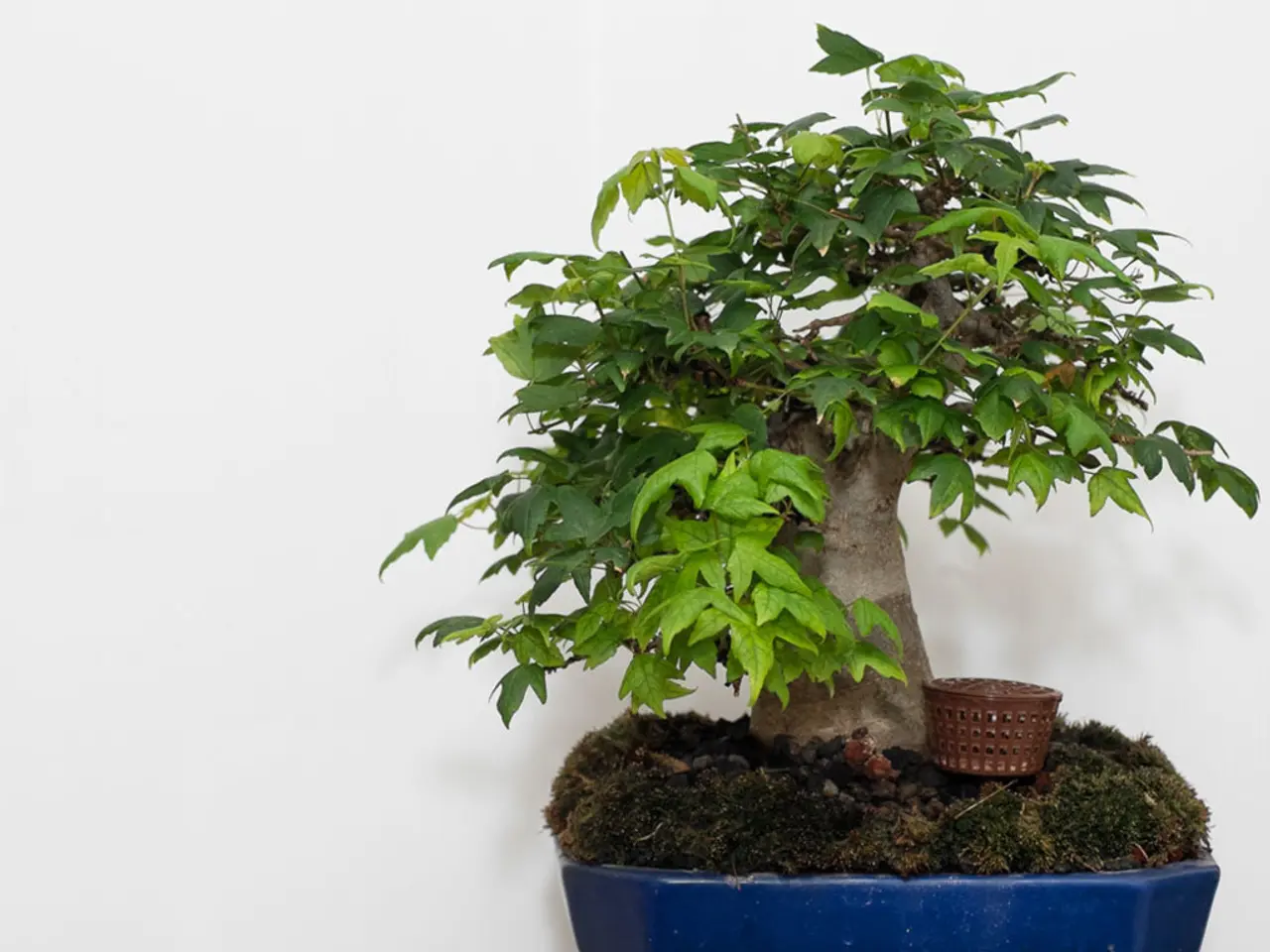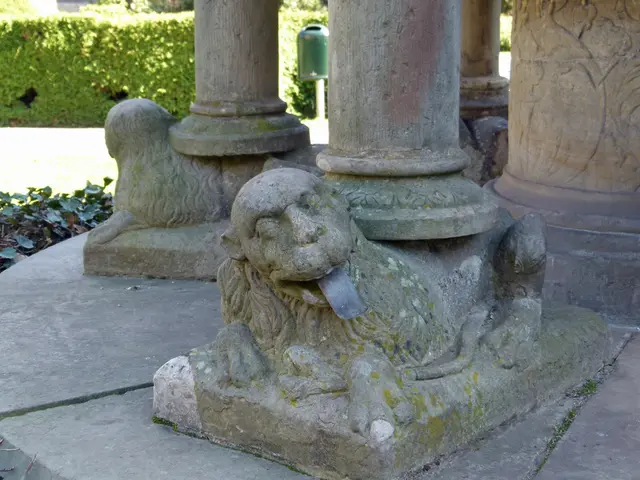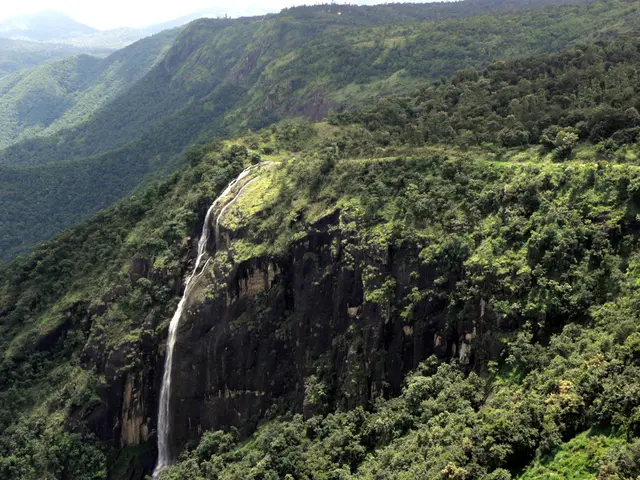Guide to Dwarf Mugo Pine Bonsai (Pinus Mugus 'Mops')
The Dwarf Mugo Pine, a hardy and resilient bonsai tree, is a popular choice for beginners and experienced bonsai enthusiasts alike. Originating from mountainous regions of central and southern Europe, this dwarf conifer prefers full sun and a moderate temperature range between 45 and 75 degrees Fahrenheit.
Caring for a Dwarf Mugo Pine bonsai involves providing the right soil, lighting, water, and nutrients. A good general-purpose fertilizer can be used, but it's best to use a bonsai plant food specially formulated for bonsai trees. To check if your bonsai needs watering, stick your finger into the soil up to the first knuckle. If the soil is dry, it's time to water.
Mugo pine bonsai trees prefer a shallow and wide pot to allow the roots to grow out and provide stability. Over-watering is harmful, so be sure not to give your bonsai too much water.
The best time to prune a Dwarf Mugo Pine bonsai is in early spring, during new candle growth. Avoid pruning in the fall, as pruning out of season causes the pine to stop growing from those points and does not produce new buds from old wood.
Initial pruning after planting can help remove broken branches and thin out heavily branched plants, helping with shaping and transplanting appearance. Pruning techniques include trimming candles (new shoots) to reduce growth rate and shorten needle length, removing the central leading shoot to create a wider crown, and pruning lateral branch tips to control the overall shape of the tree.
Styling a Dwarf Mugo Pine bonsai involves maintaining a balanced form by selectively thinning dense areas and shaping the crown to keep a natural appearance. Since the Dwarf Mugo Pine does not backbud readily, pruning should be done carefully to avoid bare areas.
Ongoing care includes monitoring new growth during the growing season, pruning as needed to maintain style and size. Avoid pruning during dormant or unfavorable seasons.
The Dwarf Mugo Pine is a beautiful tree with dense foliage that can be styled in multiple ways. With its slow growth, hardiness, and ability to withstand various climates, it's an excellent choice for beginners. Mugo pines are vigorous growers and should be repotted every two to three years for young trees and every three to five years for mature trees.
Always use clean, sharp tools to make clean cuts and reduce stress on the tree. By following these steps, you can ensure that your Dwarf Mugo Pine bonsai remains healthy and aesthetically pleasing.
[1] Bonsai Empire. (n.d.). Dwarf Mugo Pine Bonsai Care. Retrieved from https://www.bonsaiempire.com/bonsai/dwarf-mugo-pine-bonsai-care/ [2] Bonsai Tonight. (n.d.). Dwarf Mugo Pine Bonsai. Retrieved from https://www.bonsaitonight.com/bonsai-trees/dwarf-mugo-pine-bonsai/ [3] Bonsai4me. (n.d.). Dwarf Mugo Pine Bonsai Care. Retrieved from https://www.bonsai4me.com/dwarf-mugo-pine-bonsai-care.html [4] Bonsai Guy. (n.d.). Dwarf Mugo Pine Bonsai. Retrieved from https://bonsaiguy.com/dwarf-mugo-pine-bonsai/ [5] Bonsai Roots. (n.d.). Dwarf Mugo Pine Bonsai Care. Retrieved from https://www.bonsairoots.com/dwarf-mugo-pine-bonsai-care/
- For those interested in personal growth and self-development, the art of bonsai training, such as with the Dwarf Mugo Pine, offers a unique opportunity for patience, persistence, and creativity.
- As lifestyle trends continue to evolve, bonsai care has become increasingly popular among fashion-and-beauty enthusiasts who seek tranquility and mindfulness in their home-and-garden spaces.
- During a job-search, showcasing your skills and knowledge in hobbies such as bonsai training can help set you apart from other candidates in the food-and-drink industry, especially during networking events or interviews.
- For those looking for an alternative to the hustle and bustle of travel, caring for a Dwarf Mugo Pine bonsai can provide a sense of relaxation and connection with nature right at home.
- While browsing for a new career-development opportunity, one could find job openings related to bonsai-related businesses such as bonsai training workshops, bonsai care products, or even career-focused e-learning platforms offering skills-training on bonsai care.
- In the world of shopping, there has been a growing interest in buying bonsai trees and related merchandise, such as styling tools, pots, and plant food, for both beginners and experienced enthusiasts alike.
- As education-and-self-development becomes more accessible through online learning platforms, various courses on bonsai tree care, techniques, and history are available for those eager to learn more about this timeless practice.
- After a long day of work in the career-development sector, one can unwind and bond with pets at home by adding a Dwarf Mugo Pine bonsai to their shared living space, both beautifying the home and promoting an air of calm and wisdom.




